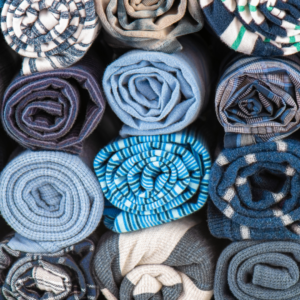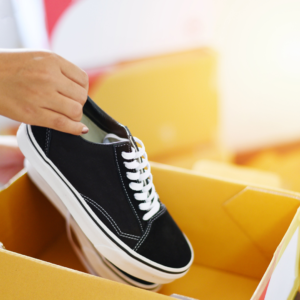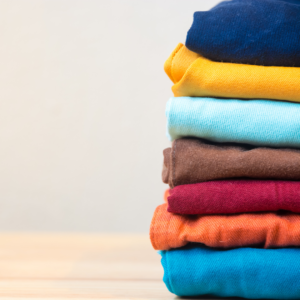Packing and moving are never easy, and when moving clothes and shoes, it takes special care to prevent damage. Clothing and shoes represent a large portion of our belongings, as it includes a range of items for the entire family. Our packing tips will get your clothes and shoes in order. Let’s take a look at some proper strategies on how to pack clothes and shoes for moving.
Required Materials:
- Packing paper
- Boxes of various sizes
- Suitcases
- Duffel Bags
- Vacuum Seal bags
- Shoe boxes
- Markers
- Sealing tape
- Tissue Paper
- Where to start
Categorize your closet
It’s necessary to have a plan in place to get your items of clothing and shoes ready for packing.
- Sort items of clothing in categories. For example:
- immediate needs
- long-term needs
- short-term needs
- seasonal
- Check the condition of the clothes for any tears, fraying, stains, or other damage.
- Launder everything and dry thoroughly before packing away.
- Making clothing piles can help get everything in order:
- Keep
- Donate
- Toss
- Repair or repurpose
- Piles for each season
- Piles for each family member
After making each category, pack off-season or storage items of clothing first. These are items you and your family will not likely wear soon. Store off-season items by vacuum sealing in bags to reduce bulk and save storage space. Make sure you pack with breathable material that helps let air in to reduce moisture and mold. Label each box to identify what will go into storage to unpack as needed.
Pack clothing you won’t be wearing soon, such as formal attire, in a waterproof suit or jacket bag to protect them from moths, mold, dust, dirt, and moisture.
Finally, pack the clothes you’ll need immediately as you settle into your new place. Packing these clothes separately will help you find clothing for each family member to use while unpacking and setting up your new home.
Set aside a complete set of clothing items for each member of the family:
- Pants
- Tops
- Shoes
- Pajamas
- Socks
- underwear
Packing delicate clothing items
Delicates can tear and suffer other damage during moving. Pack them in separate boxes to help reduce friction during transit. Use sheets of silk paper to wrap delicate clothing items to help protect them from heat, moisture, or damage.
Methods of Packing Clothes
The goal of any packing method is to prevent friction, save space, and ensure your items arrive in good condition. Each technique will ensure you pack each item appropriately to help minimize the risks.
Bundle packing
Start with a bulky item like a winter jacket or coat at the bottom. Next, place a smaller item of clothing atop the coat or jacket. Make the third layer with a smaller item of clothing. When full, wrap the coat or jacket’s ends around the smaller things to form a bundle.
Repeat for other items, and continue to place complete bundles in the packing boxes.
 Rolling Method
Rolling Method
Fold and roll items like tee shirts, socks, light items and pack them side by side to help save space. You can also fold items within other clothing to save even more space. Rolling clothing also helps reduce wrinkles after unpacking.
Flat Packing
Laying items flat inside packing boxes will also help save space.
Wardrobe Boxes
Wardrobe boxes are an excellent way to store your clothing upright and avoid any wrinkles during moving. They are ideal for packing shirts, jackets, pants, coats, and dresses. They make packing, unpacking, and re-hanging clothing a seamless exercise when you arrive at your new location.
- Place heavy items like blankets or pillows to the bottom of the box. Ensure there’s enough space to hang your clothes comfortably without any wrinkling.
- Wrap and store shoes to the base of the hanger boxes to help save storage space.
Sealing and labeling clothes boxes
- Ensure you have the right size box to help avoid overloading moving containers. 4.5 cubic foot boxes are the best size for most clothes.
- Assemble boxes carefully. Seal the bottom and edges to help prevent any spills while lifting.
- Form protective layers on the bottom and sides of boxes to help protect clothing from moving rigors.
- Always cover the top layer of clothing in each box with packing paper before closing the lid.
- Cover and seal each box with packing tape.
- Label each box to help locate clothing categories quickly when unpacking
Packing shoes

Shoes can suffer from scruff marks easily, and especially when moving. Pack them in shoe boxes, shoe bags, suitcases, or at the bottom of regular packing boxes. First, wrap each shoe in packing paper and place them at the base of your moving boxes.
If you’re using a suitcase, place small items like socks to help cushion the shoes in the suitcase. It also helps minimize any squashing or scratches on the shoes. Stuff shoes with items like foam, rolled up socks, newsprint, and other items to help keep their shape when moving.
Shoeboxes: Seal the sides of the shoebox with tape or enclose it with a rubber band or string to help protect the box’s base.
Packing A Suitcase For A Long Distance Move
It is a good idea to pack a suitcase on a long-distance move. Depending on how your travel schedule works out, you may not receive your move inventory until a few days after you personally arrive at your new location. Packing a suitcase with enough clothing to make it through the few days while you are waiting for your inventory to arrive will be very important.
Now your clothes & shoes are ready to go!
Protecting valuable clothing and shoes when moving is essential to ensure they arrive without wrinkles or scratches. Each packing method in our useful guide will help equip you with everything you need to pack them properly. If you are looking for Olympia to do the packing and unpacking for you click here for a free estimate.

